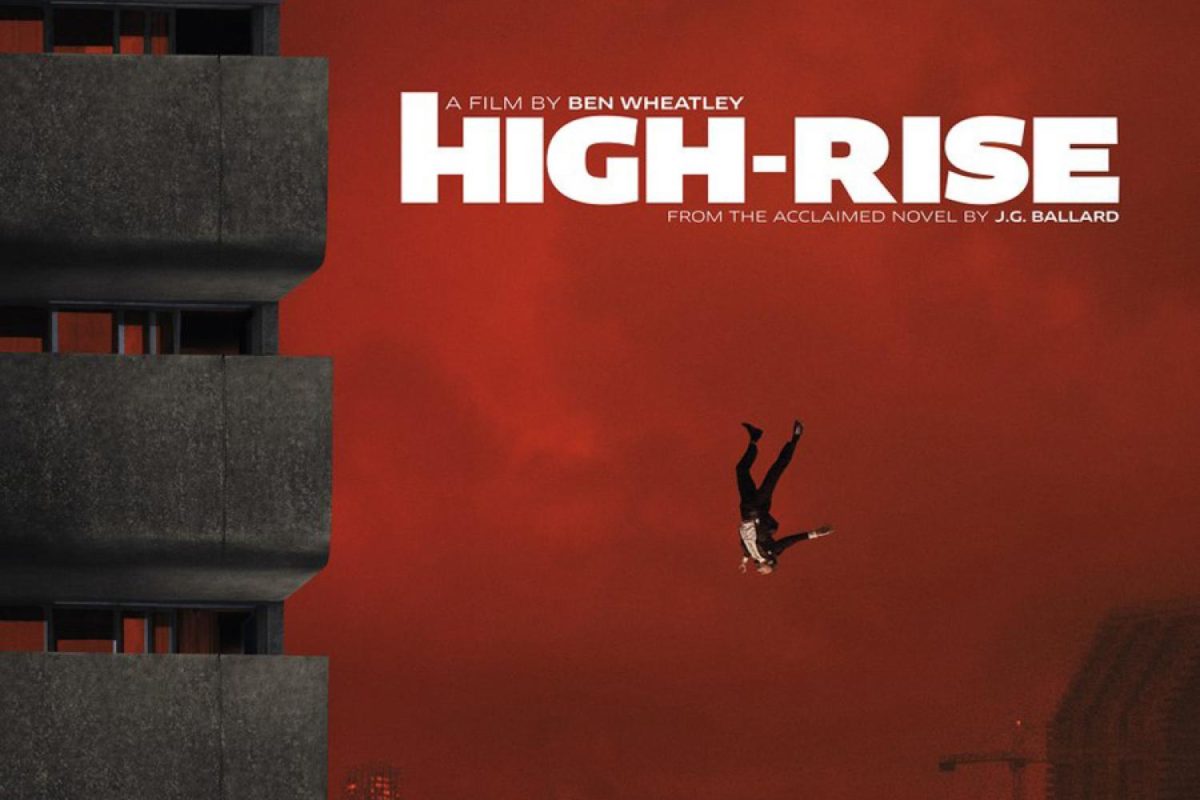Ben Wheatley’s adaptation of JG Ballard’s novel HIGH-RISE is a complex mix of political and social drama – at least that’s the first impressions that appear to be emerging from a first viewing of the film. Most of the time, ideas that are layered within a simple premise can be revelations and can create much thought amongst the people who are viewing the films in question.
High-rise settings have been around in movies for many years and often their context can be seen in a variety of different ways, both as a high concept and as a intellectual commentary on the way of the world. Certainly, HIGH-RISE, for all its evident flaws, belongs in the latter category.
In terms of modern film-making, the grand-daddy of all high-rise films remains THE TOWERING INFERNO (1974). This Irwin Allen production, his follow-up to the equally successful and well-made THE POSEIDON ADVENTURE (1972) , came about because of the combined resources of two studios, Twentieth Century Fox and Warner Brothers. Beforehand, they had purchased respectively the rights to two novels, THE TOWER by Richard Martin Stern – and THE GLASS INFERNO by Thomas N. Scortia and Frank M. Robinson.
Originally, they were planning to release them against each other. However, it seemed to be a more logical and perhaps economical decision to create a sole project using elements of each novel and prior to production released a joint statement announcing their intention to co-produce a single film.
(Incidentally, this was an arrangement that was rare at the time and remained so until Paramount and 20th Century Fox shared the risks and rewards on BRAVEHEART (1995) and TITANIC (1997), which both achieved awards and box-office success).
The result, adapted by the great screenwriter Stirling Silliphant, who also worked on the likes of THE ENFORCER (1976) and directed by John Guillermin, who helmed the 1976 remake of KING KONG, was a star-studded affair, with superstar acting legends Steve McQueen and Paul Newman, (plus William Holden, Faye Dunaway, Fred Astaire, Robert Vaughn, Robert Wagner, Susan Blakely and Richard Chamberlain). Holden and Newman’s latest skyscraper creates the mother of all fires due to budget cuts and poor quality wiring thanks to Chamberlain’s character’s desire to meet compromises against the wishes of Newman’s architect.
Twenty years before he adapted another JG Ballard novel, CRASH, in 1996 (to much controversy and brouhaha following it’s screening at that year’s Cannes Film Festival) director David Cronenberg took the high-rise concept for the first of his trilogy of dysfunctional science horror offerings.
SHIVERS (1975) (aka THEY CAME FROM WITHIN / THE PARASITE MURDERS), was the tale of a Montreal luxury tower block, (not unlike that on show in HIGH-RISE) which suddenly becomes the centre-point after a weird parasite causes the residents to go mad and develop extreme sexual desires. It effectively utilised suspense and graphic horror in a way that nobody had ever experienced before. The two follow-ups , RABID (1977) and THE BROOD (1979) continued the theme in other ways.
Undoubtedly, for most people, the image of a high-rise in films is most famously associated with – what else? – DIE HARD (1988). The action classic incorporated the Fox Plaza in Century City, LA, as the main location for the action (the building is still there, but security won’t allow you to take pictures inside the building or it’s immediate surroundings, as I found out when I visited LA in 2013)
The film, an adaptation of Roderick Thorp’s NOTHING LASTS FOREVER, was a tour de force of action and visual effects by Richard Edlund, with rogue cop John McClane (Bruce Willis) playing cat and mouse with Hans Gruber (the sadly recently departed Alan Rickman) in a thrill ride that audiences still lap up to this day. Here is the main teaser trailer:
Before the tragedy of 9/11, it was impossible to imagine the New York skyline without the Twin Towers, with their symbolism of wealth and prosperity. For a while, the images were deemed too sensitive to form part of any campaigns.
One example: Columbia had to withdraw a teaser for their 2002 reboot of SPIDER-MAN which contained images of the Twin Towers, produced in 2001.
As the pain subsided and things began to return to some kind of normality, Oliver Stone decided to tell the story of two of the firemen who were caught in the collapse of the Towers. After the release of UNITED 93, the intensely upsetting real-time chronicle, studios began to see the virtue in telling the stories of the victims and communities.
WORLD TRADE CENTER was an effective drama that focused more on the human element, rather than the spectacle, keeping the story grounded.
Two other recent examples which have utilised the high-rise to great effect have been MISSION: IMPOSSIBLE – GHOST PROTOCOL and ATTACK THE BLOCK, which were both released in 2011.
GHOST PROTOCOL took Ethan Hunt’s IMF team to Dubai and a jaw-dropping sequence above the world’s tallest building. ATTACK THE BLOCK, which was the film that brought John Boyega to the attention of JJ Abrams for the phenomenally successful STAR WARS – THE FORCE AWAKENS, chronicled the attempts of a teenage gang around a South London housing estate.
https://www.youtube.com/watch?v=V0LQnQSrC-g
Without question, the movie that has been blowing audiences away recently using a high-rise idea – and one that has become a true rival and successor to the Bruce Willis classic – is Gareth Evans’ phenomenal THE RAID (2012). Simple concept, but incredible execution. It’s sequel, THE RAID 2 (2014) is an even bigger and extravagant offering, though it doesn’t take place in a high-rise as much as the first.
I am sure that with all the images and thrills that have emerged from these and other films over the years, the concept of a high-rise at the heart of cinema screens will remain for years to come.





























